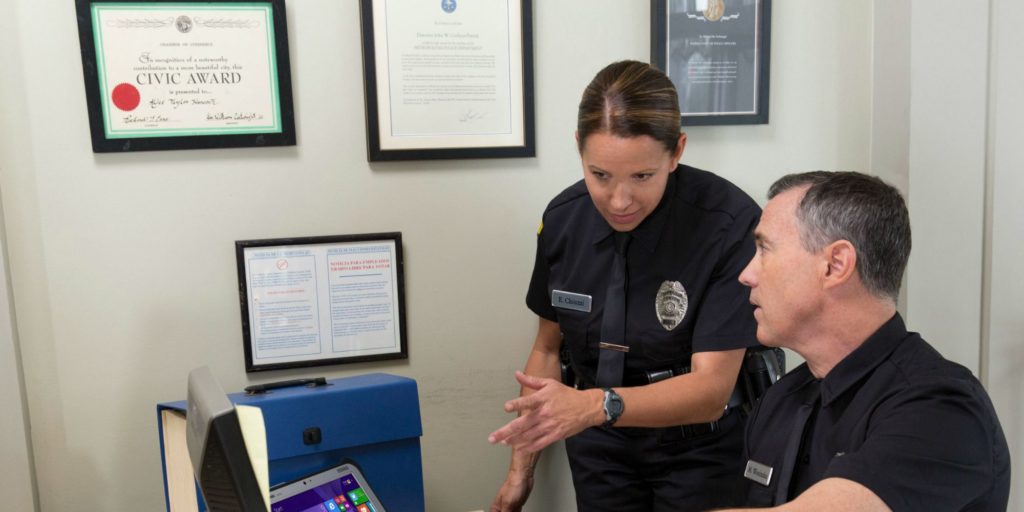
A team approach to crisis response
A city functions better when all its departments and agencies—from law enforcement to IT to communications—work seamlessly together. That’s especially critical when there’s a crisis that demands an urgent response. When planned or unplanned events escalate, city leaders must act in concert.
But that’s a huge challenge for many cities today. Think of some of the recent global terrorist attacks in urban areas, where several gunmen struck at different sites. In those situations, the response from public safety was fragmented, because so many different entities needed to communicate with one another but weren’t used to doing so.
It’s all about collaboration
So what can be done to improve the response to such crises? How can these disparate city agencies team up to get the freshest, most relevant information to incident commanders, so they can make the real-time decisions required to save lives and protect property?
Those were some of the big questions addressed at the Citywise Urban Security and Technology Innovation Roundtable in New York City, which I spoke at, and are still pertinent today. The event, sponsored by Microsoft CityNext partner Genetec, attracted dozens of federal, state, and local law enforcement agencies from the greater New York metropolitan region. We gathered to discuss the policies and best practices needed to ensure a coordinated, unified response to crises, and how modern security and surveillance technologies can lead the way.
The big takeaway from our discussions? It’s all about collaboration. By putting more of their time and resources into multi-jurisdictional and multi-agency collaboration, cities can vastly improve their ability to respond in an efficient, unified way. All the agencies in attendance agreed: you can’t wait until an incident occurs to start collaborating! It has to happen on the front end, and it has to involve frequent discussions at a regular cadence.
Bringing it together with the right technology
The second key part of a better, more unified response strategy, of course, is technology. And like collaboration, it needs to be seamless because of the breadth of technologies most cities employ. New York City is a great example. The city is taking advantage of a huge number of security and surveillance technologies, including CCTV cameras monitoring traffic and crowds, automated license plate readers stationed on overpasses, criminal database systems, body-worn police cameras, and even social media and weather feeds.
Every day, the city’s numerous departments and agencies rely on sensors embedded in all of these systems to capture images and data and relay it to central command centers. But capturing and processing all that data often requires the power and scalability of the cloud. Using cloud services, city entities are able to quickly get updated information to people who need it in a crisis. By getting information as soon as it happens, police and fire departments, for instance, can be on the scene as fast as possible.
Genetec is one organization that’s using the cloud to deliver integrated security and surveillance information to city departments. Genetec launched a Microsoft Azure–based security solution that police, fire, and other departments can use to manage images from video security, access control, and license plate recognition cameras across cities to help cut crime. The solution is designed to help cities make better, more informed crisis response decisions by visualizing where incidents are happening and where the nearest resources are.
NYPD: fighting crime with smartphones
Cities are also increasingly using mobile technologies to respond faster to emergencies. The New York Police Department (NYPD), for example, recently gave all 35,000 of its officers Windows Phones equipped with a domain awareness system (DAS) mobile app. The app accesses several NYPD databases and shows incoming 911 calls, so officers can see what emergencies are taking place near them and call the witness who placed the call.
Several weeks ago, two NYPD officers used the app to quickly identify and apprehend a shooting suspect. This kind of app demonstrates exactly how city departments want their technology to operate. They don’t want to have to think about how it works—they just want to use it to do their jobs better and respond faster.
But, again, it isn’t just about the technology. Collaboration is an essential part of making sure a unified response works successfully. By working more closely together first and then getting the right technologies in place, cities will be much better prepared to respond to a crisis seamlessly and swiftly.
For more information about Genetec and its cloud security solutions, visit www.genetec.com and follow Genetec on Twitter. Have a comment or opinion on this post or a question for the author? Please let us know on Twitter or LinkedIn




